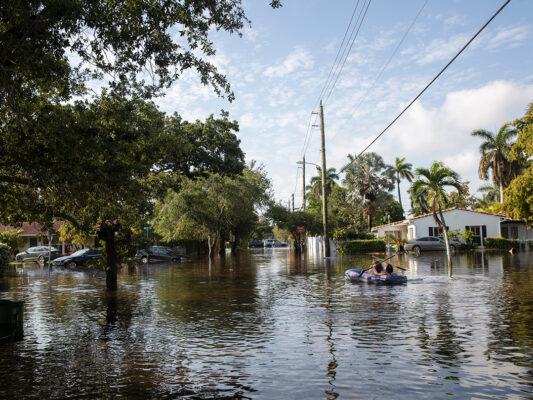Early Warning Early Action (EWEA) for U.S. Refugees and Migrants

Even with the most skillful weather forecast, communication breakdowns in early warnings prevent people from taking early action, especially under-represented populations. Language barriers, a lack of access to technology, and high economic needs are all reasons why populations such as refugees and other migrants may not receive or act on warnings about extreme weather.
In this applied research, Tufts University and the American Red Cross, with guidance from NOAA collaborators, will conduct research in 4 case study locations to better document how refugee and migrant populations in the United States receive, understand, and act on early warnings and information related to weather hazards.
Our project will conduct semi-structured qualitative interviews, focus group discussions, stakeholder consultations, and surveys with target populations to better understand communication flows, gaps, and recommendations regarding early warning information.
This project runs from 2023–2025. We are currently identifying partners in field locations and local researchers to support the project. For more information, please contact Dr. Evan Easton-Calabria.
Our project aims to:
1) Develop a replicable methodology for widespread use to better understand, improve, and utilize the information ecosystems of under-represented populations in the US relating to weather hazards and warnings. We will ensure the replicability of our methodology through developing an open-source 1. guide for civil society partnership and key informant selection, 2. survey instrument, 3. interview guide, and 4. training-of-trainers guide.
2) In collaboration with researchers from refugee and other migrant populations, conduct research to develop case studies of 8 climate disasters through quantitative surveys and qualitative interviews with migrant and refugee communities and stakeholders working with them to document how people receive, interpret, and respond to warnings and forecasts of extreme weather events. We are current finalizing target locations, hazards, and populations, which may include:
- Tulare County, CA: Undocumented and documented (regularized) migrants
- Flash flooding from heavy rain rapidly melting snowpack (March 2023)
- Extreme heat (e.g. July 2023)
- Terrebonne, LA: Indigenous (Houma Nation) climate migrants
- Hurricane Ida (2021)
- Extreme heat (e.g. August 2023)
- Warren, Kentucky: Resettled refugees
- Tornadoes (e.g. December 2021)
- Severe thunderstorms
- Sarasota/Lee, Florida: Undocumented and documented (regularized) migrants
- Flooding
- Extreme heat
3) Based on these results, identify good practices and effective strategies for communicating weather events to these populations that can inform forecast design by NOAA and the overall weather community. Broaden understanding of migrants’ and refugees’ vulnerabilities to weather and early warning needs.
